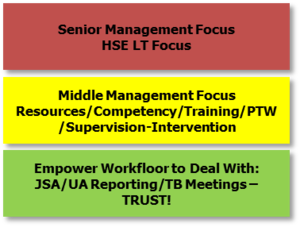Operational Marine Risk Management: Process Safety
Identification and management of marine process safety risk exposure is a key focus area on every offshore project. However, there are new and evolving threats that continue to challenge the offshore industry’s ability to deliver incident free projects. Simply stated, these threats are the dilution of skills and limited experience prevalent in a rapidly expanding industry.
This GATEKEEPER will discuss, at a high level, the decision support tools and methodologies that can be implemented to assist in the delivery of incident free execution of projects through focused risk mitigation in the key process safety impact areas of station keeping and vessel integrity.
Each subsequent Operational Risk Management GATEKEEPER will continue building on the concepts and themes delivered in this article.
THE CASE FOR ACTION
The industry continues to experience station keeping and vessel integrity incidents on a frequent basis. Each month brings a new story of a near miss with high potential consequences, or in some cases, with consequences. This accumulation of near miss incidents and incidents with consequences represent an escalating probability of disaster with catastrophic consequences. Simple application of Heinrich’s safety triangle concept demonstrates the point of escalating probability (See Figure 1).
It must be acknowledged that process safety incidents do not manifest with the same level of forewarning as those associated with personal safety AND that the severity of the consequences associated with a process safety event are likely to be more damaging (loss of life, diminished reputation, and bottom line impacts). It is this lack of forewarning and escalated level of consequence that requires a practical and focused approached to marine risk management.
It is not outside the realm of possibility and probability that a loss of position or compromise of vessel integrity on a drilling vessel could result in an event similar to Macondo. Offshore regulators in the United States have acknowledged that a loss of vessel position or vessel integrity can escalate into a loss of well containment.
WHAT IS PROCESS SAFETY?
Before proceeding further it is helpful to have a common understanding of what process safety is.
Process safety is a blend of engineering, management and operational skills focused on preventing catastrophic incidents. Particularly explosions, fires and toxic releases.
It is this “blend of skills” approach that is required to build effective barriers that prevent a top event from occurring. No single person will possess the skills and knowledge alone to mitigate process safety risk exposure.
RISK TYPES
The are 4 generally accepted categories of risk:
Known
Unknown
Known-unknown
Unknown-Unknown
Within each category, risk is understood to be “measurable uncertainty;” uncertainty is understood to be “unmeasurable risk.” Without an effective method of identifying process safety risks, a project may be left with an unknown and unacceptable level of residual risk exposure.
QUESTION: WHAT IS IT CALLED WHEN AN UNKNOWN RISK DOESN’T OCCUR?
Answer: Luck!
We do not like to be lucky….we like to be good!
THE DECISION SUPPORT TOOLS (DST’S)
EFFECTIVE IDENTIFICATION AND MANAGEMENT OF MARINE PROCESS SAFETY RISK EXPOSURE CAN BE ACHIEVED THROUGH THE DEVELOPMENT AND IMPLEMENTATION OF DECISION SUPPORT TOOLS KNOWN AS WELLS/ ACTIVITY SPECIFIC OPERATING GUIDELINES (WSOG/ASOG’S) FOR STATION KEEPING AND ACTIVITY MARINE OPERATING GUIDELINES (AMOG’S) FOR VESSEL INTEGRITY.
These decision support tools, when properly developed, will create predictability of a vessel’s performance during execution of its industrial mission. It does this by identification of key risks in specific focus areas (vessel configuration/setup, operational criteria, SIMOPs) that, when known, can be adequately addressed with effective barriers.
Unlike many other marine risk management approaches (such as Common Marine Inspection Documents and Offshore Vessel Inspection Databases, marine warranty surveys, vessel inspections), the WSOG/ASOG & AMOG provides FOCUS that is Activity-specific, Vessel-specific & Area-specific, while linking equipment and people through a process (See Figure 4).
CONCLUSIONS
Dilution of skills and limited experience prevalent in a rapidly expanding industry are real risks to the safe delivery of offshore project execution.
Traditional methods of managing marine risk do not adequately address process safety risk exposure associated with station keeping and vessel integrity.
The residual process safety risk exposure, from traditional risk management approaches, could result in unpredictable vessel performance such as a loss of position or vessel integrity.
A loss of station keeping or vessel integrity may directly result in, or escalate into, catastrophic events.
The DST’s (WSOG/ASOG’s and AMOG’s), when developed and implemented properly, can effectively identify and manage marine risk exposure associated with station keeping and vessel integrity.
REFERENCES
The following references have been provided to further aid in developing the DST’s For WSOG/ASOG:
MTS DP Operations Guidance Part 1
DP Operations Guidance Part 2 Appendix 1 (MODUs)
DP Operations Guidance Part 2 Appendix 2 Project /Construction Vessels
DP Operations Guidance Part 2 Appendix 3 Logistics Vessels
DNV-RP-E307
FOR AMOG:
DNV-RP-H104




